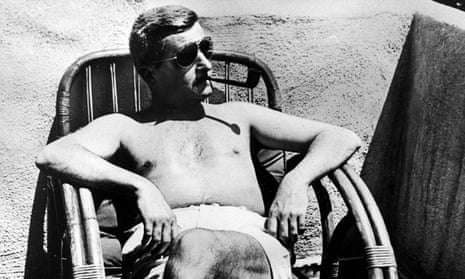This is the first, and probably the most popular, of Faulkner’s Yoknapatawpha County stories, a short, dark and compelling novel set in what he called “my apocryphal county”, a fictional rendering of Lafayette County in his native Mississippi. It was his ambition, he said, after the comparative failure of The Sound and the Fury, “deliberately to write a tour de force”. Apart from Mark Twain (No 23 in this series), no other American writer before Faulkner had ever immersed his readers so completely in the vernacular language and culture of a society that was, and perhaps still is, so deeply foreign to mainstream American experience.
The death and burial of a southern matriarch, Addie Bundren, is told from some 15 viewpoints, including that of the dying woman herself. The Bundren family’s demanding stream-of-consciousness narrative (Faulkner was a modernist pioneer) is intercut with the voices of the local doctor and preacher, together with neighbours and friends. From the first line, the reader is pitched into the deep south: “Jewel and I come up from the field, following the path in single file… anyone watching us from the cotton-house can see Jewel’s frayed and broken straw hat a full head above my own.” Welcome to a brutal, backwoods community of impoverished cotton farmers in 1920s Mississippi.
Addie’s dying wish is to be buried among her own people, “a hard day’s ride” away. So her family are carting her coffin to Jefferson, Miss, for the funeral. The Bundrens’ journey to these last rites becomes itself a rite of passage punctuated with fire (a burning barn) and water (a dangerous river crossing). The brilliance of this sometimes difficult novel lies in Faulkner’s compulsive, bleak unfolding of Addie’s history and her relationship with her beloved son, Jewel, the result of her affair with Rev Whitfield, the local minister.
In counterpoint to this, we also meet her family, an extraordinary cast of weird southerners – Cash, Darl, Dewey Dell and Vardaman Bundren. Perhaps it’s the measure of Faulkner’s originality that his work seems so incomparably more contemporary than his great contemporaries, Fitzgerald and Hemingway (Nos 51 and 53 in this series). For some, he is greater than either.
A note on the text
Faulkner claimed he wrote As I Lay Dying from midnight to first light in six weeks while working at a power plant to make ends meet, and moreover that he did not change a word of it. This claim is now seen as apocryphal as Yoknapatawpha County itself. According to many sources, the title of his seventh novel derives from Book Eleven of The Odyssey, a passage where, with “As I lay dying…”, Agamemnon tells Odysseus about his murder.
As I Lay Dying has also directly influenced a number of other critically acclaimed books, including Graham Swift’s Booker prize-winning novel Last Orders and an African-American retelling by Suzan-Lori Parks, Getting Mother’s Body. The Australian novelist Peter Carey has often told interviewers that he was inspired to become a writer through reading Faulkner, whose other contemporary admirers include Mario Vargas Llosa. Richard Ford, the Pulitzer prize-winning author of Canada and The Sportswriter, is another, among many American writers, who also acknowledges a debt to Faulkner, not least because he grew up in Faulkner’s home state.
Three more from William Faulkner
The Sound and the Fury (1929); Light in August (1932); Absalom, Absalom! (1936).
As I Lay Dying is available in Vintage Classics (£8.99). Click here to buy it for £6.74

Comments (…)
Sign in or create your Guardian account to join the discussion